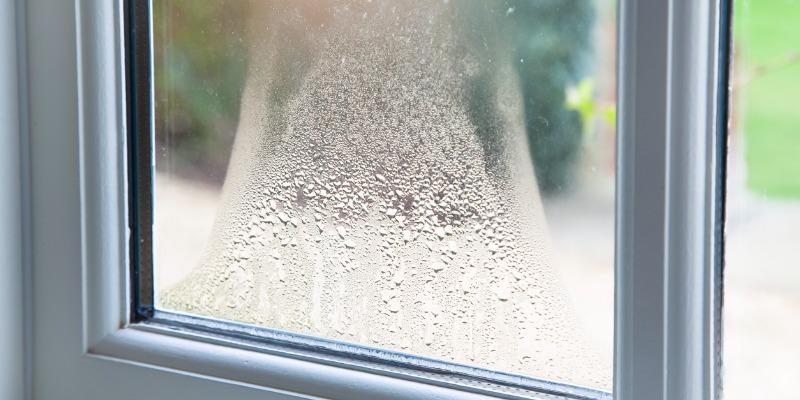
While everyone knows that temperature control is vital to a comfortable home environment, humidity control is equally important. In Canada, relative humidity levels of 35% in the winter and 50% in the summer are considered comfortable by most people. Beyond comfort, keeping relative humidity near these levels is critical to the health of people living in a home. According to the Public Health Agency of Canada, very dry conditions can result in dry skin, chapping, and breathing problems. On the other end of the spectrum, overly damp conditions can result in musty smells, mould, and persistent allergies.
Keeping relative humidity levels in a comfortable and healthy range can be tricky. Read on to discover several humidity issues and how to deal with them no matter the season.
1. Avoid Condensation at Home
If you see condensation in your home, it’s time to address your humidity levels. Aside from being uncomfortable, the presence of condensation means that there’s enough excess water in the air to allow mould to grow. A local ventilator such as a kitchen hood or a bathroom exhaust fan will expel excess moisture from a specific area and keep it from condensing on your windows and other surfaces. Less moisture means fewer opportunities for nasty mould and fungi to grow.
2. Keep Your House Dry in Humid Summer Weather
People appreciate air conditioners for their cooling capabilities, but they also can function as dehumidifiers. Energy Star recommends installing an AC vent in particularly humid areas of your home. Doing so will keep the moisture from condensing in problematic areas as well as improve overall ventilation. If your AC doesn’t reduce humidity to a comfortable level, you can also consider installing a whole-home dehumidifier, whose sole function is to rid your home of excess humidity.
Are you looking to speak with an HVAC Expert? Contact the team at Whitfields ClimateCare today!
3. Increase Comfort in Dry Winter Weather
Managing humidity in winter is trickier than in summer. Sometimes the weather will lead to your house being too dry; other times, it’ll be too humid. If your home’s relative humidity is too low in the winter, consider installing a whole home humidifier. These devices are low-maintenance, quiet, and provide huge benefits to your home — everything from making it easier to breathe to protecting wood furniture.
An energy recovery ventilator (ERV) is also an option to keep moisture in your home in the winter. In the process of ventilating your home, an ERV will dehydrate outgoing air and use that moisture to humidify incoming air. This keeps the moisture level in your home comfortable, even if the outside air is very dry.
4. Increase Comfort in Humid Winter Weather
On the other end of the spectrum, if your home is too humid in the winter, consider a heat recovery ventilator (HRV). HRVs increase air circulation and expel humidity from your home without losing too much heat, an impressive feat in cold Canadian winters.
Maintaining comfortable humidity in your home can be a balancing act. That’s why it’s a good idea to bring in a professional. At Whitfield ClimateCare, we have the knowledge and experience to keep your home comfortable and healthy all year round. Contact us today to schedule an appointment. We look forward to working with you.






